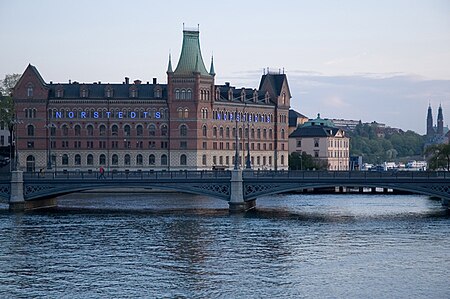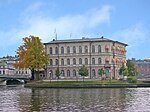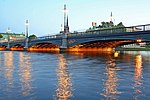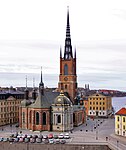Norstedt Building
Buildings and structures in StockholmSwedish building and structure stubs

The Norstedt Building (Swedish: Norstedtshuset) is the main office of P.A. Norstedt & Söner AB on Riddarholmen in Stockholm, Sweden. Designed by Magnus Isæus the building was built in 1882–1891, and features a spire-like roof, which is a well-known silhouette on the skyline of central Stockholm. The Vasabron Bridge passes in front of the building and Gamla Riksarkivet ("Old National Archive") lies south of it.
Excerpt from the Wikipedia article Norstedt Building (License: CC BY-SA 3.0, Authors, Images).Norstedt Building
Norra Riddarholmshamnen, Stockholm Riddarholmen (Södermalms stadsdelsområde)
Geographical coordinates (GPS) Address External links Nearby Places Show on map
Geographical coordinates (GPS)
| Latitude | Longitude |
|---|---|
| N 59.326127777778 ° | E 18.063169444444 ° |
Address
Norstedtshuset
Norra Riddarholmshamnen
101 23 Stockholm, Riddarholmen (Södermalms stadsdelsområde)
Sweden
Open on Google Maps











